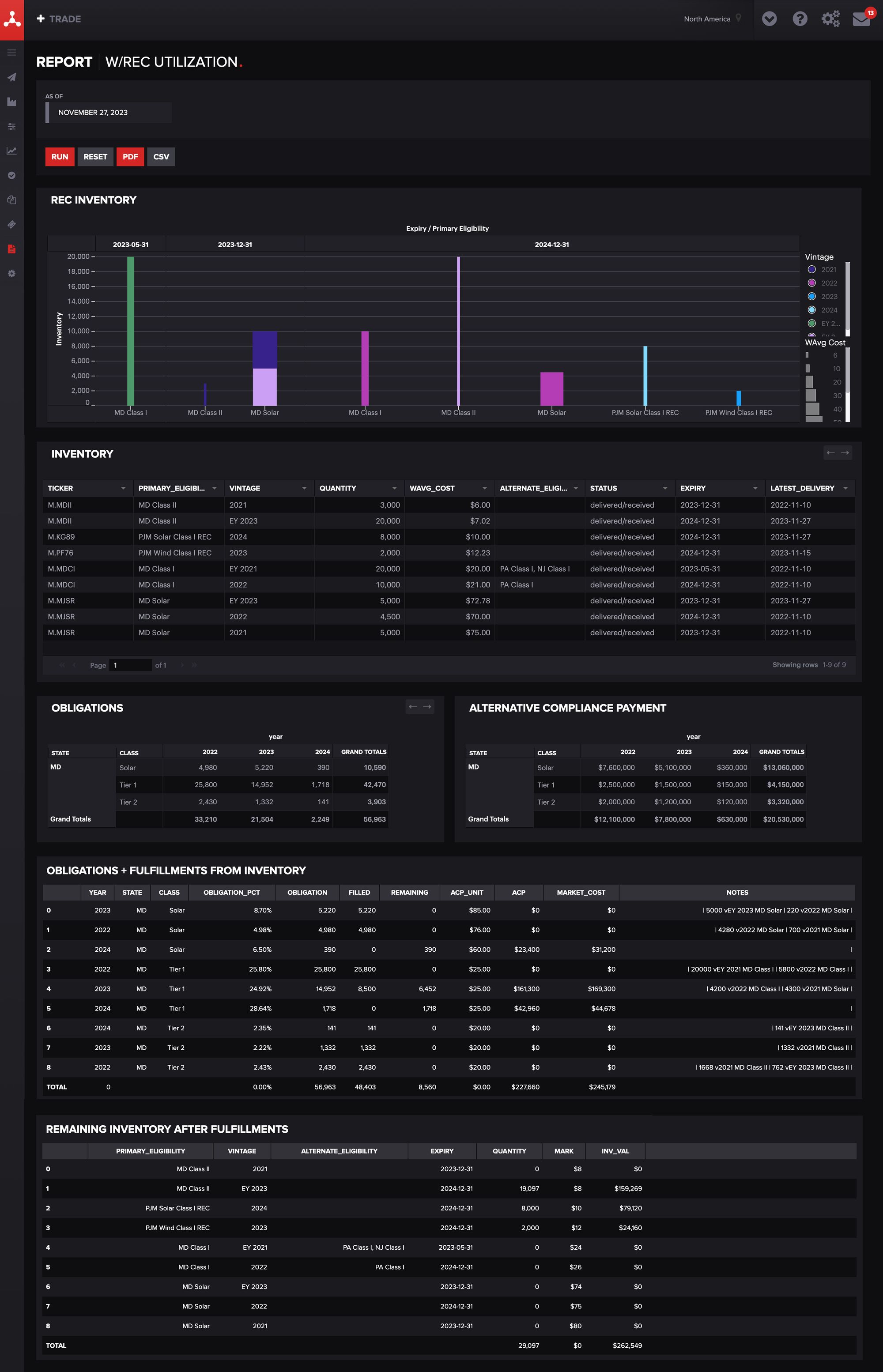What's the Best ETRM Software for the Global Energy Transition?

Over the past few decades, organizations have been working to reduce Scope 2 and Scope 3 GHG emissions and decrease their carbon footprints. This has initiated a global transition towards renewable energy.
Between 2000 and 2010, renewables grew by just over 1%. Now, “the world is set to add more than 5,500 gigawatts (GW) of new renewable energy capacity between 2024 and 2030 – almost three times the increase seen between 2017 and 2023,” according to the IEA's Renewables 2024 report. Not only has this shift greatly impacted energy markets, but also how energy is traded, managed, and tracked.
Companies have had to re-evaluate how they handle emissions tracking, carbon offsets, and renewable certificates. These market changes have called for new ways for software to support trading and risk management. In this blog, we’ll explore how an energy trading risk management solution, or an ETRM, is a valuable tool for navigating evolving energy markets.
Table of Contents:
- How has the global energy transition affected energy trading markets?
- How does the best ETRM software help navigate emerging markets?
- How should your ETRM handle renewable trading?
- How does the best ETRM software help you keep track of credit risk?
- How do you determine the best ETRM software to help you adapt to the energy transition?
How has the global energy transition affected energy trading markets?
The migration from fossil fuels has created a surge in wind, solar, battery storage, and biofuels. This change has impacted not only how companies produce energy but also how they trade it.
We’ve seen a similar change in power markets with RECs and voluntary carbon markets with carbon offsets, to incentivize greenhouse gas reduction. By enabling new revenue streams for clean energy producers, these instruments help level the playing field, making renewable energy more competitive with fossil fuels in many markets.
This shift in trading has created an emerging need for software to monitor and manage renewable instruments in new and different ways.
How does the best ETRM software help navigate emerging markets?
Renewable commodities are unique and distinct from long-established trade instruments. Since they have unique characteristics depending on the markets and regions in which they were created, renewable instruments must be traced and monitored differently.
Although ETRMs were not designed specifically for renewable trading, their foundational features and functionalities make it easier to monitor and manage renewable certificates and offsets than other software or tools, such as spreadsheets or ERPs.
ETRMs were originally created to handle:
- Deal capture
- Transaction processing
- Forward positions
Deal capture is a core function of most ETRM software systems, and the most flexible ones can adapt to capture renewable certificates through manual entry or built-in integrations with exchanges, ISOs, registries, and more. However, what if your current ETRM is not flexible enough to capture this data in a meaningful way for your business needs? This is where the adaptability of your trade risk management technology is crucial. You’ll need to audit your current tools to ensure they’ll solve your future challenges.
How should your ETRM handle renewable trading?
For renewables trading, invest in an ETRM that can track renewables’ unique attributes. These include:
- Eligibility
- Class
- Expiry
- Certificate ID
Moreover, ETRMs that are designed for renewable energy trading will help manage inventory and avoid double claims by tracking certificate numbers down to the serial number level. Since these systems are already designed to handle the full lifecycle of trades, look for one that can also model the lifecycle of renewable certificates and offsets, such as:
- Forecasts
- (Revised) estimates
- Contracts
- Minted volumes and deliveries
- Expiries/retirements
- Allocation strategies
Here’s what that looks like in practice within Molecule:

When evaluating ETRMs for tracking renewables, ask if the system can provide an audit trail and match renewable certificates and carbon offsets with their associated commodity. Here are examples of functionality to look for:
- Automated certificate matching and allocation
- Optimization based on your strategy or compliance needs
- Certificate tracking at the serial number level
- Audit trails linked to proposals and demand requirements
Since transaction processing is a fundamental part of ETRM software, you can easily enter marks and values, as well as settle certificates, of renewables into the system. ETRMs can also help you manage credit risk through counterparty documentation.
One of the key advantages of ETRMs over other systems is automated position reporting, which can be applied to renewables trading and management. With the right ETRM, you can see position reports and which certificate offset carbon-related positions. For instance, you might have custom reports that show you:
- Which certificates should be retired first
- Inventory levels and expirations
- How certificates offset carbon positions
- Unallocated or mismatched certificates across your portfolio
Although these essential processes can be traced and monitored on spreadsheets, doing so increases the risk of errors, silos, and missed opportunities.
How does the best ETRM software help you keep track of credit risk?
Since government regulation drives new energy markets, they also define what data needs to be tracked and reported. To remain compliant, you need to keep a close eye on your portfolio. An ETRM allows you to do just that.
ETRMs can help you stay on top of regulations, including customizations for credit risk reporting. Because credit monitoring is increasingly a part of regulatory requirements, an ETRM can also give you the tools to help you monitor your counterparties, collateral, and contracts.
How do you determine the best ETRM software to help you adapt to the energy transition?
Compared to spreadsheets, ETRMs’ fundamental capabilities can help companies stay on top of the changes in energy trading and environmental markets. However, with all of the ETRMs on the market, how do you know the right one to choose?
First, evaluate the extent to which the ETRMs on your list handle renewable certificate and offset management with the criteria outlined in this blog. Determine:
- How the ETRM software handles renewable certificates
- If there are built-in integrations to ISOs or registries
- How the ETRM tracks the unique attributes of renewable commodities
- How the ETRM reports on carbon-related positions
- How the ETRM helps you monitor regulatory requirements
That’s where SaaS, or Software-as-a-Service ETRMs, come in. They are more flexible and adapt more quickly to market changes and their effects on your trading needs, compared to on-prem ETRMs.
For instance, Molecule has a robust data model and uses continuous integration and continuous delivery (CI/CD) — meaning we can develop, test, and release new code frequently and safely without disrupting the user experience. As a result, our ETRM is engineered to deliver new features and support new products and markets in a way that is not disruptive to the end user. In other words, customers can log into our application with new features ready to use — at no additional cost.
Editor's note: This blog was originally published in July 2023 and was updated and republished in July 2025.




